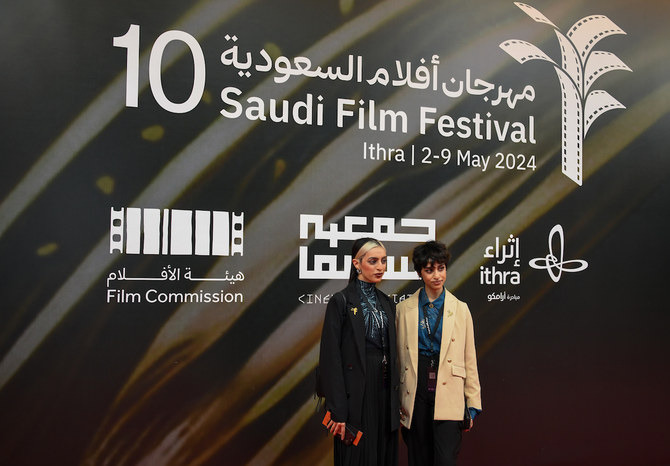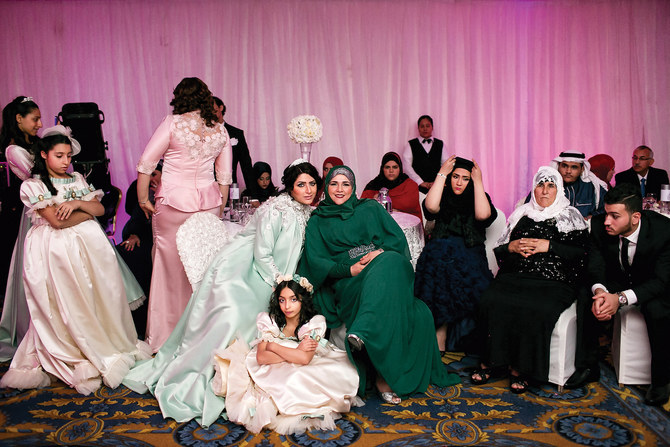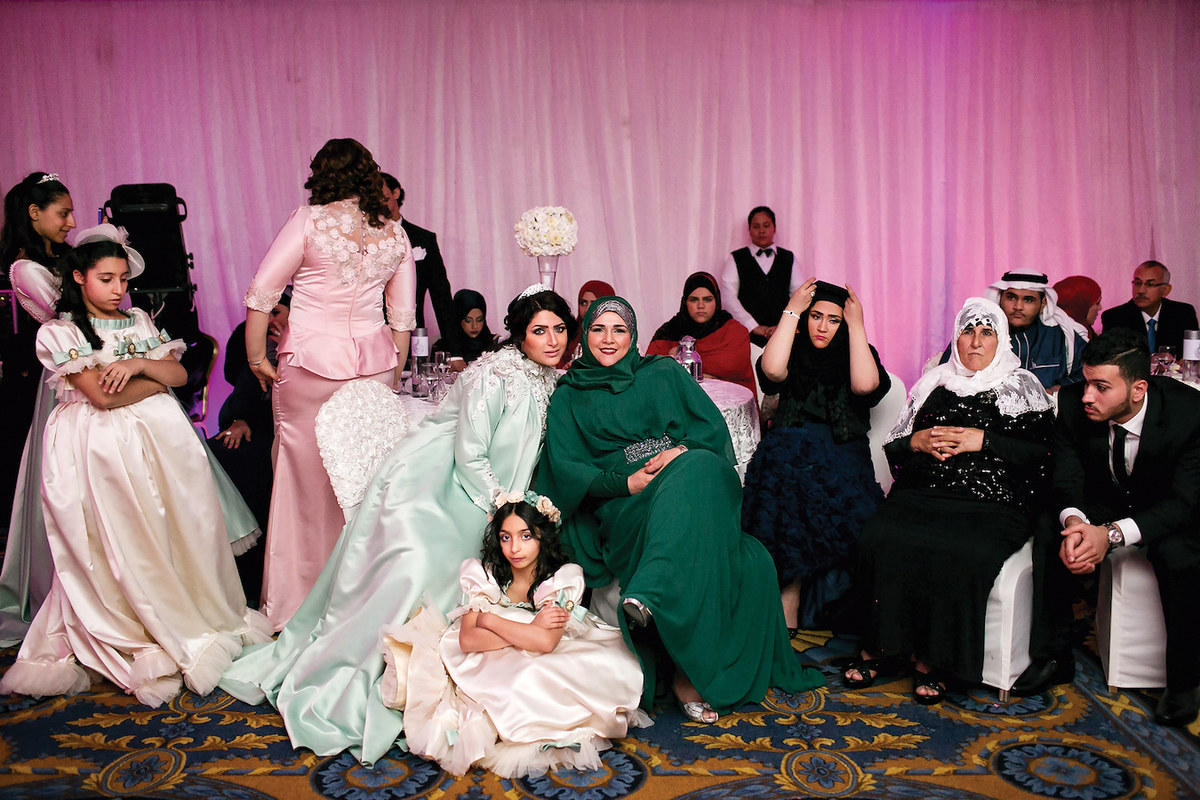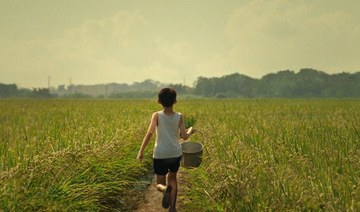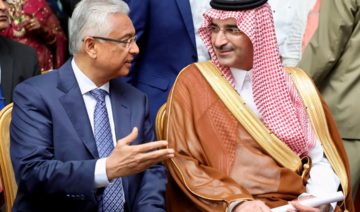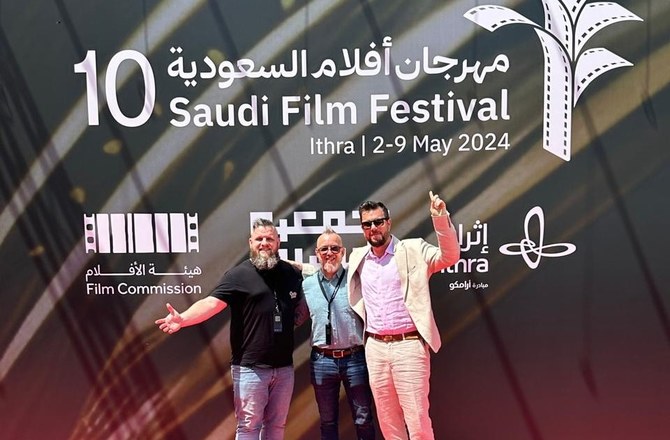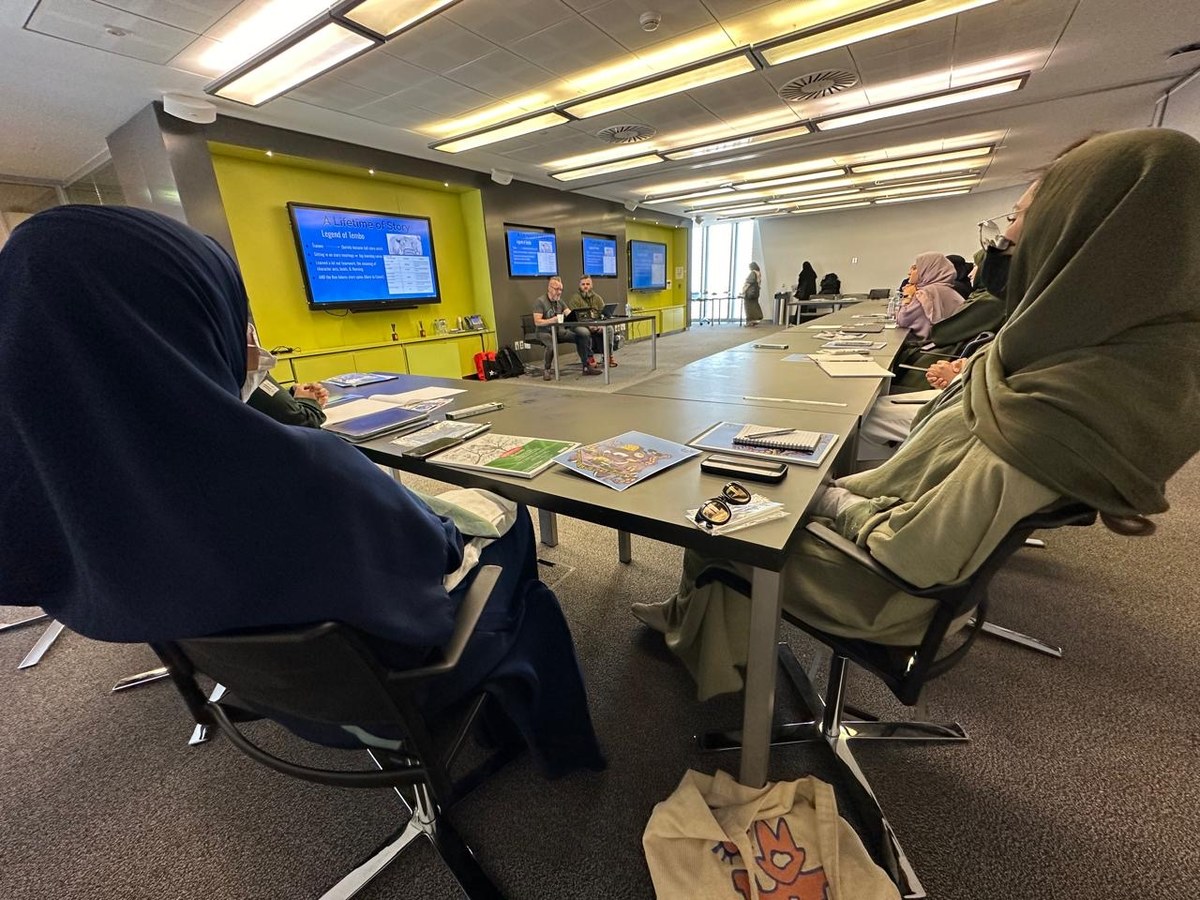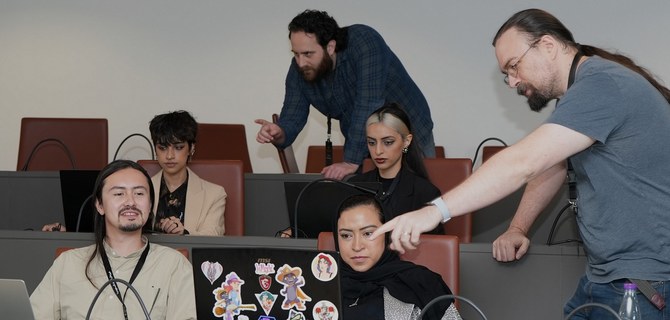DUBAI: In 2010, during the Greek debt crisis, Chef Ilias Kokoroskos was asked a random question after service by his mentor that would forever change his culinary career: Would he want to go to Dubai? The stint was supposed to last for six months, but there was a change in plans and heart. “I ended up being here 13 years,” Kokoroskos tells Arab News.
Raised between the Greek island of Crete and Athens, the cheerful chef’s passion for cooking began at around 15 years old. He went to cooking school and worked briefly as a chef de partie in Belgium. “I was falling in love with the process of how you treat the food, from taking it from the producer to making the end product,” he says.
In Dubai, he is currently head chef of six restaurants, including Mythos, a popular, award-winning Greek eatery. The venue’s warm and earthy tones, verdant terraces, and traditional chairs, large pots, and flooring (all imported from Greece) transport diners to the Mediterranean country, creating a relaxing and authentic atmosphere.
“I’m very proud about Greek food in Dubai,” Kokoroskos says. “It kind of restores Greek pride because, back in the day, in other countries, Greek food wasn’t so good. We had a very bad reputation. People thought that Greek food was only gyros, moussaka, and Greek salad — when it’s not only that.”
Kokoroskos has crafted a diverse menu that presents vegetables, meats, and seafood in a fresh manner, imbued with Greek flavors.
Apart from the healthy properties of Greek cuisine, what makes it stand out, in the eyes of Kokoroskos, is its simplicity; you can whip up a dish using two to four ingredients. “It’s more difficult to make something good and simple than something complicated,” he says.
Here, Kokoroskos discusses family food memories, kitchen regrets, and shares his recipe for suckling lamb pilafi.
Q: What’s your earliest food memory?
A: The family table, especially in the countryside with my mother, father, sister, grandmother, grandfather… It was a nice feast of food. As for actually cooking food, I remember making something very simple — just pasta with butter. But I wanted it to be perfect.
When you started out as a professional, what was the most common mistake you made?
I tried to put a lot of ingredients in a dish — a bit of this, a bit of that, I did this, I did that… It ended up being something that was not actually nice — and not me.
What one ingredient can instantly improve any dish?
It’s not an ingredient that you can actually find in the market. It’s consistency and balance.
What’s your top tip for amateur chefs?
For amateurs, nothing. Because amateurs are cooking for themselves or families, because they love it. I have the biggest respect for them. For new chefs coming into the industry, I’d tell them what I did: Don’t look for positions, don’t chase the money, don’t grow up very fast. When you’re building something very fast, it’s very easy to fall down. Work hard and focus on the kitchen.
Are you a disciplinarian in the kitchen? Do you shout a lot? Or are you more laidback?
For me, a kitchen should be disciplined like an army. Imagine running a kitchen with 20-25 people inside and everybody’s doing whatever they want. It would be chaos. We have fun, when the time is right. I used to shout a lot. (Laughs.) I regret it now, but now I think I’m more fair.
What customer behavior most annoys you?
Ahh... What annoys me is when someone says, “I don’t want this ingredient on this dish.” I think that’s the nightmare of any chef. I’ve put effort and love into this dish. There’s a reason why each ingredient is there.
What’s your favorite dish to cook?
Anything to do with baking, like bread and pies.
When you go out to eat, do you find yourself critiquing the food?
Not really. I like going out and enjoying myself with my friends or my wife. I cannot criticize the food because I do not know what the chef had in his or her mind. I respect what they’re putting on the table. . . I respect that it might have been a bad day. We all have bad days.
Chef Ilias’ suckling lamb pilafi
The lamb:
INGREDIENTS: 1 lamb shoulder, whole with the bone; 3 onions; 2 tomatoes; water; sea salt; olive oil
INSTRUCTIONS:
1. Place a pot over high fire and put the lamb shoulder in, cover with water, bring to the boil.
2. Reduce the heat to medium and clear the scum. Simmer on medium heat for two hours.
3. Add the whole tomatoes and onions to the pot and boil until the meat falls of the bone.
4. Remove the lamb from the stock, season with sea salt and olive oil and set aside.
5. Strain the stock and set aside.
6. Chop the tomatoes and onions and keep them aside.
The rice:
INGREDIENTS: 200g Arborio rice; 1 medium onion, chopped; 500g chicken stock; 200g lamb stock; 130g olive oil; 2 tbsp wild oregano, fresh; 70g kefalograviera cheese
INSTRUCTIONS:
1. Add 80g of olive oil and the onion to a shallow pot over medium heat. Sauté until onion is translucent. Add rice and continue to heat until the rice is also lightly translucent.
2. Slowly add the chicken stock in four stages, while stirring.
3. Add the lamb stock slowly, in two stage. By that time, the rice should be cooked but still have a slight bite to it – not al dente, but one stage further.
4. Add the wild oregano, the chopped boiled onion and tomato, the rest of the olive oil, and 50g of kefalograviera cheese. Heat until the rice is creamy.
5. Place the rice on a plate, top with the lamb and the rest of the cheese. Serve.




